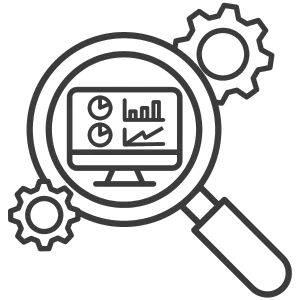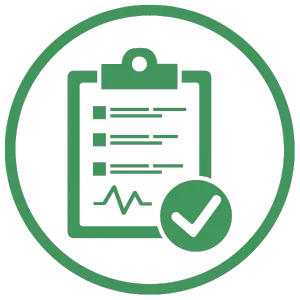eCQM for ACOs
Everything you need to know for 2024
Staying ahead in the rapidly evolving healthcare landscape is paramount. For the reporting year 2025, significant changes to the MIPS have been announced, impacting how you report quality measures. Beginning your reporting now, before it becomes mandatory, is crucial for identifying and resolving potential issues early on. Adapting to the new MIPS reporting requirements ahead of time is not just about compliance but more about enhancing patient care and optimizing your practice’s operations.
1. Main Changes with the eCQM Mandate

Expanded Patient Coverage:
Quality reporting now encompasses all payer types, not just Medicare.
Inclusive Denominator:
All patients meeting specific quality measure criteria are included.
Streamlined Measures:
The requirement has been refined to three mandatory clinical quality measures, focusing on key areas such as depression screening, hemoglobin A1C control, and blood pressure management.
2. Challenges Facing ACOs

Data Aggregation Solution:
ACOs comprised of different practices on different EHRs have not developed a solution that enables them to track a patient from one practice to the next.
Performance Inefficiencies:
Performance may suffer for ACOs with large underserved populations. Social Determinants of Health and income inequality play a significant role in poor outcomes for patients with chronic disease, and so ACOs are likely to see performance rates drop when reporting across the network.
Operational:
ACOs argue that the shift to eCQMs diverts attention from patient care, increases reporting burdens due to the all-patient, all-payer mandate, and raises privacy and ethical concerns. They also highlight unfair financial discrepancies in shared savings for similar quality scores and criticize eCQMs for measuring EHR functionality over actual care quality, noting that data misplacement can lead to inaccurate care representation.
3. Benefits of Early Adoption

Smooth Transition:
Starting early allows for a period to refine data integration and stabilize the reporting process.
Identify Gaps in Care:
Early reporting highlights areas requiring improvement, enabling you to address them proactively.
Strategic Planning:
Use this time to familiarize yourself with the eCQM tracking and leverage non-MIPS related quality data for broader insights.
4. How Can Canyon Health Data Solutions Help?

Data Aggregation
Canyon HDS's Qualified Registry Solution provides data aggregation, de-duplication, and reporting accuracy. We can aggregate data for each of the three quality measures from multiple sources and in various formats, including different EHR files, billing files, excel templates and custom files.

Performance Monitoring
Our software offers ACOs tools for evaluating and monitoring performance across ACO, TIN, and NPI levels, providing constant feedback for practice improvement and necessary workflow adjustments before submission.

Reliable Reporting
With over 15 years of quality reporting experience across all states and practice settings, we can track data year-round to enable performance improvement tracking of MIPS CQMs and Web Interface measures in 2024.

Experienced Team
Our experienced team guides ACOs through the entire reporting process, offering strategies to maximize reimbursements and avoid losses, while their service center provides assistance on MIPS APM Performance Pathway (APP), eCQM, MIPS CQM, education, and technical support.
Interested on how we can help? Speak with our team today!
Frequently Asked Questions
Who can be eligible for MIPS?
MIPS eligibility is based on a clinician's National Provider Identifier (NPI) and the associated Taxpayer Identification Numbers (TINs), referred to as the TIN/NPI combination. You must be identified as a MIPS eligible clinician type on Medicare Part B claims, have enrolled as a Medicare provider before end of the previous year, and not be a Qualifying Alternative Payment Model Participant (QP).
Eligible Clinicians (but not limited to):
Physicians, Physician Assistants, Chiropractors, Clinical Nurse Specialists, Nurse Practitioners, Physical Therapists, Occupational Therapists, Clinical Psychologists, Certified Register Nurse Anesthetists, Qualified Speech-Language Pathologists, Qualified Audiologists, Registered dietitians or nutrition professionals, Qualified speed-language pathologists, Certified Nurse Midwives, Osteopathic Practitioners
What are the four performance categories for MIPS?
MIPS adjusts Medicare Part B payments based on performance in four performance categories:
Quality (30%)
Cost (30%)
Promoting interoperability (25%)
Improvement activities (15%)
What happens if you do not report MIPS?
Unless you qualify for an exemption from MIPS in a year, you will receive a -9% payment adjustment to your Medicare Part B fee-for-service (FFS) claims in the following year.
What is the cut off date for MIPS reporting?
You must report data collected during the calendar year by March 31 of the following calendar year.
Payment adjustments, based on the data you submit for services provided, are applied to Medicare Part B claims during January 1 to December 31 of the year following data submission.

